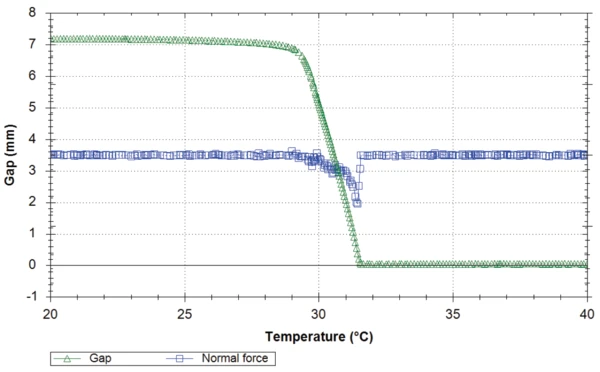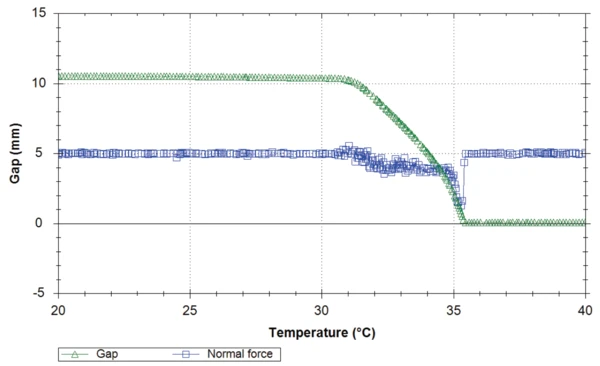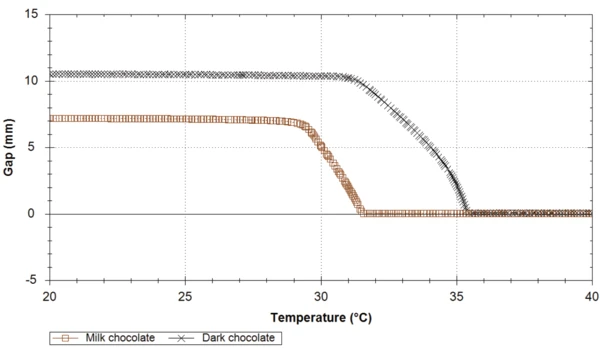Introduction
Rotational rheometers with sensitive normal force control and high data rate do not only perform classical rheological tests, but also allow for quantification of sensory perception. For example, the Kinexus rotational rheometer is capable of mimicking the action of the tongue against the palate during chocolate melting in the mouth.
Measurement Conditions
In the following study, the mouth feel and melting behavior of a milk chocolate (for direct degustation) and dark chocolate (for cake coating) are compared. A piece of chocolate which was placed on the lower plate of the rotational rheometer was heated in order to mimic warming in the mouth. A normal force of 5 N was applied on the upper plate to simulate the tongue pressing on the chocolate. Table 1 summarizes the test conditions.
Table 1: Measurement conditions
| Device | Kinexus Rotational Rheometer |
|---|---|
| Geometry | PP8 (plate/plate, diameter: 8 mm) |
| Starting gap | 7.2 mm (milk chocolate) 10.5 mm (dark chocolate) Variable gap during the measurement |
| Normal force | 5 N (variable gap) |
| Temperature range | -20°C to 40°C, 2.5 K/min |
| Frequency | 1 Hz |
| Shear StressStress is defined as a level of force applied on a sample with a well-defined cross section. (Stress = force/area). Samples having a circular or rectangular cross section can be compressed or stretched. Elastic materials like rubber can be stretched up to 5 to 10 times their original length.stress | 100 Pa |
Measurement Results
Figure 1 depicts the curves of the gap and normal force during heating the milk chocolate. Providing the sample is in a solid state, the gap remains constant and corresponds to the height of the chocolate piece. The gap decrease between 29°C and 31.5°C results from the chocolate melting. This process is detected very accurately due to the high data rate and the precise normal force control.
Figure 2 displays the curves measured for the dark chocolate.


Figure 3 compares the gap of both samples during the temperature ramp. The dark chocolate starts melting later than the milk chocolate (the gap begins to decrease at 31°C) and takes longer by almost 4.5°C, vs. only 2°C for the milk chocolate. This means as a consumer we will experience chocolate melting and flowing in the mouth faster for the milk chocolate than that of the dark chocolate.

Conclusion
The high data rate, together with the normal force capabilities of the Kinexus rotational rheometer, enables the detection of rapid gap changes of chocolate during melting. Such measurements are useful to simulate the behavior of chocolate in the mouth, and thus to quantify sensory perception.